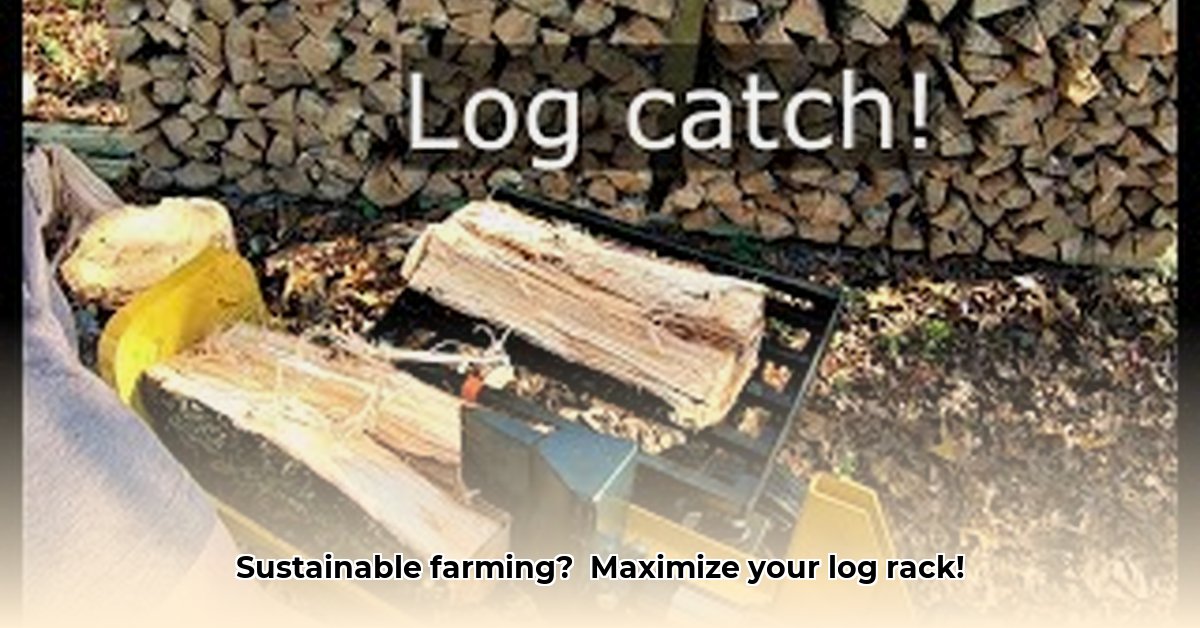
Efficiently storing firewood isn't just about convenience; it's a cornerstone of sustainable farming. A well-organized woodpile, protected from the elements, represents responsible resource management and minimizes waste. This guide shows you how to select and use a log rack from Tractor Supply to optimize your firewood storage, aligning with sustainable agricultural practices. For more on sustainable materials, check out this resource on coco coir.
The Importance of Sustainable Wood Sourcing and Management
Sustainable forestry is vital for environmental health and farm profitability. Using wood from responsibly managed forests reduces deforestation, protects biodiversity, and ensures a consistent wood supply. Look for certifications like the Forest Stewardship Council (FSC) – these guarantee sustainable sourcing. Choosing certified wood demonstrates environmental responsibility and secures long-term wood availability. Isn't responsible forestry a smart investment in your farm's future?
Choosing and Using Your Tractor Supply Log Rack
Selecting the right log rack hinges on several factors:
Size: Measure your storage area and estimate your annual firewood needs, considering potential future increases. Don't buy too small or waste space with an overly large rack.
Material: Steel racks offer exceptional durability, often outlasting wood options. However, treated lumber presents a more aesthetically pleasing alternative. When choosing treated lumber, ensure it's treated with non-toxic, environmentally friendly preservatives.
Design: Freestanding racks offer flexible placement, while wall-mounted options conserve space. Evaluate your existing shed or storage area layout and choose a design that fits seamlessly.
A Step-by-Step Guide to Efficient Wood Storage
Follow these steps for optimal storage and minimized waste:
Ground Preparation: Clear any debris and level the ground for your log rack. This ensures stability and prevents uneven settling.
Rack Assembly: Carefully follow the manufacturer's instructions. Attention to detail here minimizes future problems.
Strategic Stacking: Start with larger logs at the bottom, decreasing in size as you ascend. This creates a stable, less prone-to-toppling base.
Airflow: Don't pack logs tightly! Leave air gaps for ventilation to prevent rot and mildew. Good airflow is crucial for proper drying.
Optional Protection: Consider using a tarp or cover (secured to prevent blowing away) for added protection from harsh weather.
Best Practices for Long-Term Wood Storage
| Practice | Benefit | Potential Drawbacks |
|---|---|---|
| Efficient Stacking | Prevents rot, insect infestation, maximizes space | Requires planning and careful placement of logs |
| Adequate Air Circulation | Reduces moisture, prevents rot and mold | May require more space between stacks |
| Using a Cover (optional) | Shields wood from rain, snow, and UV damage | Can trap moisture if not properly ventilated |
| Regular Inspection | Early detection of problems like insect infestation | Requires time and attention |
| Using Seasoned Wood | Burns cleaner, more efficiently, less creosote buildup | Requires longer wood storage time |
Beyond the Log Rack: A Holistic Approach to Wood Management
Sustainable wood management extends beyond the log rack. Consider these broader practices:
Responsible Sourcing: Prioritize wood from sustainably managed forests; certifications like FSC are your assurance.
Minimizing Waste: Repurpose wood scraps for other farm projects – creativity can transform waste into valuable resources.
Repurposing and Recycling: Reuse old pallets for fencing or other farm needs. Reducing waste saves money and promotes sustainability.
Conclusion: Investing in a Sustainable Future
Using a Tractor Supply log rack is a smart investment in sustainable wood management. Combining efficient storage with responsible sourcing and waste reduction benefits the environment and your farm's bottom line. It's a long-term investment in your farm's health and prosperity. Remember, sustainable practices are vital for the future of farming.